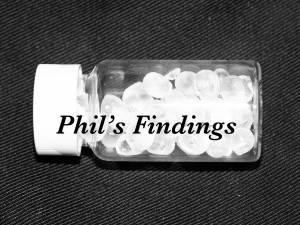Phil’s Findings #19: Radioactivity
05 December 2011


In the modern day, there is a tendency to associate radiation and radioactivity with danger and destruction. The terrible destructive power of the atomic bomb was first revealed to the world by the complete destruction of Hiroshima and Nagasaki at the end of the Second World War, and a succession of other global incidents, such as at Chernobyl in 1986 and more recently in Fukushima this year, have cemented in many people feelings of fear and distrust. It has even led to some of the world’s most powerful states backing away from the development of nuclear power, for example in Germany where the previously pro-nuclear government have announced their intention to decommission all of their nuclear power plants by 2022, which previously accounted for nearly a quarter of their national electricity consumption.
However, when radioactive materials first came to prominence in the early 20th century, there was no knowledge of the dangers associated with them. As the scientists of the day were getting stuck into the fundamental study of radiation and radioactivity, it became quite the fashion to include radioactive substances in pretty much anything and everything, from vases and spark plugs to toothpastes, lozenges, and even condoms. Radiation was seen to be this new and powerful force which would could rejuvenate and empower, and people really embraced it. These feelings obviously did not last, and as the dangerous and destructive power of radioactive materials became apparent they gradually ceased to be used in consumer products.
Radioactivity arises from certain materials because of their chemical make-up. All of the elements larger than bismuth, number 83 in the periodic table, are radioactive. The atomic nucleus can be thought of as something like a drop of water, where the larger it is the more unstable it becomes: large atomic nuclei are packed with neutrons and protons, and need to spit out some particles in order to lose energy and gain stability. These particles carry a lot of energy with them, which is what makes them dangerous to biological organisms – they interact with your cells at a molecular level and often lead to catastrophic changes in your biological functioning. Uranium is the largest naturally occurring radioactive element, and is abundant in the Earth’s crust. However, it is always contained in mineral deposits and cannot be found in its pure state. Uranium is the only naturally fissionable substance, which means its atoms can be split to release incredible amounts of energy. This energy release is what drives nuclear power plants, and gives nuclear weapons their destructive force.